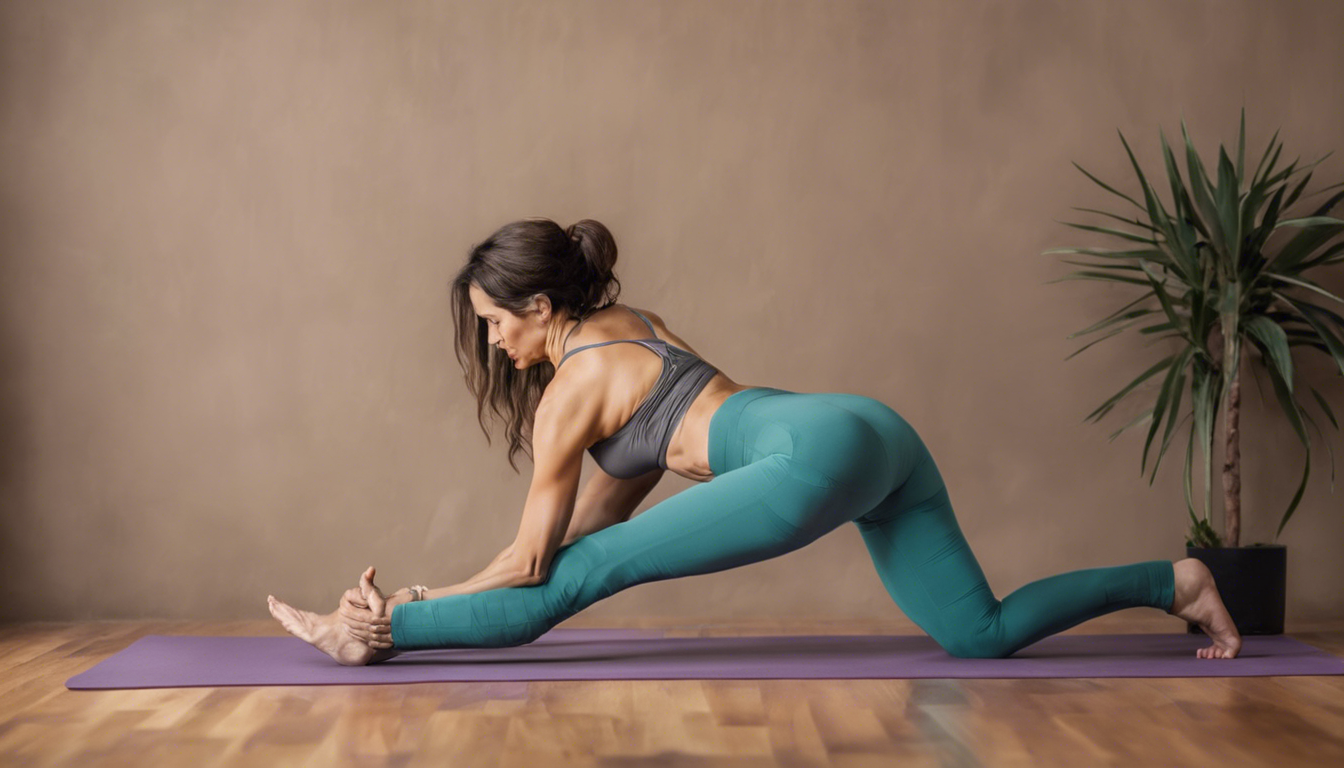Sciatica can be a debilitating condition that affects the lower back and legs, making everyday activities challenging.
Fortunately, practicing yoga offers a natural and effective way to manage sciatica pain.
In this article, we will explore the underlying causes and symptoms of sciatica, the benefits of incorporating yoga into your pain relief strategy, and several essential poses designed specifically for relief.
Whether you’re a seasoned yogi or a beginner, these insights will guide you toward creating a safe and consistent yoga practice that can help alleviate your discomfort.
Let’s dive into the world of yoga for sciatica and discover how it can transform your journey to relief.
Your Sciatica Pain-Free Future Starts Here – Click to Learn More!
Key Takeaways
- Sciatica is often caused by nerve compression, leading to pain and discomfort.
- Yoga can provide significant relief from sciatica symptoms through targeted poses.
- Essential poses like Child’s Pose and Pigeon Pose can enhance flexibility and reduce pain.
- Practicing yoga safely involves listening to your body and avoiding any movements that exacerbate pain.
- Establishing a consistent yoga routine can be key for long-term sciatica management.
Understanding Sciatica: Causes and Symptoms
Sciatica is characterized by pain that radiates along the path of the sciatic nerve, which runs from the lower back, through the hips and buttocks, and down each leg.
The discomfort often arises when this nerve becomes compressed, commonly caused by herniated discs, bone spurs, or spinal stenosis.
It’s essential to recognize that the symptoms of sciatica can vary widely, ranging from dull aches to sharp, burning sensations, and may accompany additional symptoms such as numbness or weakness in the legs.
One effective approach to managing sciatica involves incorporating yoga into your routine.
Yoga for sciatica can help alleviate tension and improve flexibility, allowing you to strengthen the muscles that support the back and pelvis.
By focusing on gentle stretches and mindful movements, yoga not only eases discomfort but also promotes overall well-being, making it a valuable tool for anyone experiencing this condition.
Benefits of Yoga for Sciatica Relief
Yoga for sciatica offers a holistic approach to managing pain and discomfort associated with this condition.
By incorporating gentle stretches and mindful movements, yoga can help alleviate pressure on the sciatic nerve, promoting better spinal alignment and flexibility.
Poses such as the pigeon pose and child’s pose can enhance blood flow to the affected areas, while also reinforcing relaxation and stress reduction, which are crucial for pain management.
Additionally, the emphasis on deep breathing and mindfulness found in yoga encourages a connection between the body and mind, enabling individuals to better cope with chronic pain.
Whether you’re a seasoned yogi or a beginner, integrating yoga for sciatica into your routine can lead to significant improvements in mobility and a reduction in pain, making daily activities much more manageable.
‘Yoga is the journey of the self, through the self, to the self.’ – The Bhagavad Gita
Essential Yoga Poses for Sciatica
When it comes to finding relief from sciatica pain, incorporating specific yoga poses can be incredibly beneficial.
Yoga for sciatica focuses on gently stretching and strengthening the muscles along the spine, as well as promoting overall flexibility and alignment.
Poses such as the Child’s Pose help to lengthen the spine and release tension in the lower back, while the Pigeon Pose opens the hips, which can alleviate pressure on the sciatic nerve.
Triangle Pose not only strengthens the legs and core but also encourages a manageable stretch that can ease discomfort.
Additionally, practicing the Cat-Cow stretch can improve spinal mobility and reduce stiffness.
Always remember to approach these poses with mindfulness, listening to your body and avoiding any movements that exacerbate your pain.
With consistent practice, these yoga poses can not only help in alleviating sciatica symptoms but also contribute to improved overall well-being.
Your Sciatica Pain-Free Future Starts Here – Click to Learn More!
Tips for Practicing Yoga Safely with Sciatica
Practicing yoga for sciatica can be an excellent way to alleviate pain and promote flexibility, but safety should always come first.
Begin by consulting with a healthcare professional to ensure that your yoga practice is appropriate for your condition.
When you’re ready to start, focus on gentle stretches and poses that emphasize spinal alignment, such as child’s pose, cat-cow, and supine spinal twists, which can all help ease tension in the lower back and hip area.
Listen closely to your body—if a pose causes sharp pain or discomfort, gently back off and modify as needed.
Using props like cushions or blocks can offer extra support, making the practice more accessible.
Additionally, incorporate deep breathing exercises to enhance relaxation and reduce muscle tension.
Lastly, consider joining a yoga class tailored specifically for those suffering from sciatica, where instructors can provide guidance on safe techniques and share tips for developing a sustainable practice.
Creating a Consistent Yoga Routine for Pain Management
Establishing a consistent yoga routine can be incredibly beneficial for managing sciatica pain, helping both beginners and experienced practitioners alike.
Sciatica often arises from compression of the sciatic nerve, leading to pain that radiates from the lower back down through the legs.
By incorporating specific yoga poses into your daily routine, such as Child’s Pose, Downward Dog, and Pigeon Pose, you can decompress the spine, stretch tight muscles, and enhance overall flexibility.
It’s essential to listen to your body throughout this process; practicing gentle movements and focusing on your breath can help alleviate discomfort and promote relaxation.
Aim for at least three sessions a week, gradually increasing the intensity and duration as your strength and comfort levels improve.
Remember, consistency is key—not only will this approach help alleviate sciatic pain, but it can also foster a deeper connection between your mind and body, ultimately leading to a more balanced and healthier lifestyle.
FAQs
What is sciatica and what causes it?
Sciatica is a term used to describe pain that travels along the sciatic nerve, which runs from the lower back through the hips and buttocks and down each leg.
It is often caused by conditions such as a herniated disk, spinal stenosis, or bone spurs that compress the nerve.
How can yoga help relieve sciatica pain?
Yoga can help relieve sciatica pain by gently stretching and strengthening the muscles in the lower back, hips, and legs.
This can alleviate pressure on the sciatic nerve, improve flexibility, and promote overall relaxation.
What are some essential yoga poses for sciatica relief?
Some effective yoga poses for sciatica relief include Child’s Pose, Pigeon Pose, Downward-Facing Dog, and Cat-Cow Stretch.
These poses focus on stretching and opening the hips and lower back.
Are there any tips for practicing yoga safely with sciatica?
Yes, it’s important to listen to your body, avoid deep twists or forward bends that may strain your back, and use props like blocks or bolsters for extra support.
Always consult a healthcare professional before starting a new yoga practice.
When should I seek professional help for sciatica pain?
If you experience severe or persistent pain, numbness, weakness in the leg, or issues with bladder or bowel control, it’s important to consult a healthcare specialist.
They can provide a proper diagnosis and recommend appropriate treatment.




